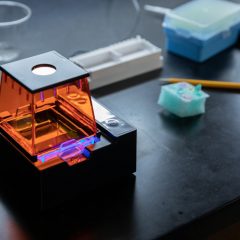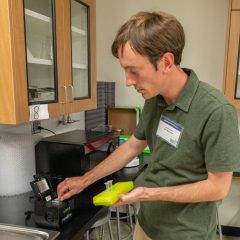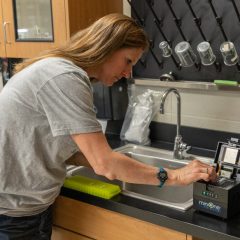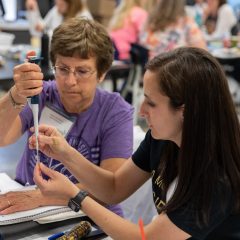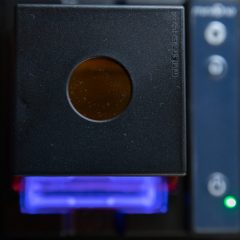Biotechnology
GMO or GM-NO?
Grade Level: High School
Looking at the history of corn, a great story can be told about how people saved seeds and selected for specific traits to turn teosinte into the modern corn plant that we have today. This lab will enable students to use equipment that is not made available to very many. With the use of a Polymarese Chain Reaction (PCR) machine, students will start to see one of the final steps of identifying what a genetically modified organism is and what foods they consume today that contain a GMO. This lab can end the series of all biotechnology Seed to STEM labs, which enables a teacher to teach the science behind a genetically modified organization throughout the school year. GMO or GM-NO can provide a finale to these series of lessons.
Quick Links
mini PCR Lab Instructions
GMO or GM-NO?
Teaching the Lesson
- Kansas College and Career Ready Standards
- Learning Objectives
- Materials
- Safety Considerations
- Procedures for Instruction
- Preparation Procedure
- Background Information
- Classroom Discussion
- Procedure for Lab
- Teacher Resources
- Lab Analysis
- Reflection and Conclusion
- Extension Activity
- Assessments
- Science and Agriculture Careers
- Sources
- Disclaimer
About Kansas Corn STEM
Investing in Kansas teachers and students is a priority for the Kansas Corn Commission. We are committed to providing materials and training to support STEM education while fostering an understanding of how corn farming and agriculture fit into our daily lives. Professional development workshops are offered to teachers seeking to expand their knowledge and inquiry-based teaching skills. Workshop participants receive free lab supplies needed for the lessons.
Workshop InfoThis lesson is the work product of the Kansas Corn Commission. Our lessons are written in collaboration with Kansas teachers for use in the classroom. Teachers may copy and share this curriculum. Use of this product for commercial or promotional use is prohibited without express permission of Kansas Corn.
Newsletter Sign Up
Each quarter we release a newsletter written by teachers for teachers. This is an easy way to keep up with what is happening at Kansas Corn STEM.
Subscribe Today!


